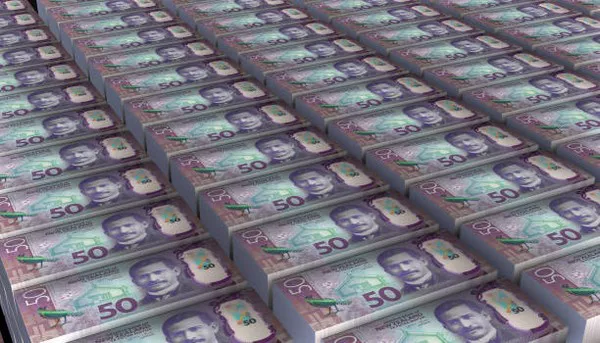New Zealand today uses the New Zealand Dollar (NZD), a modern and internationally recognized currency. However, New Zealand’s monetary history is rich and varied, reflecting its colonial roots and evolving economy. Before the NZD was introduced in 1967, New Zealand used several other currencies and systems. This article explores the history of currency in New Zealand prior to the introduction of the NZD.
Early Currency in New Zealand
Barter and Trade in the Pre-colonial Period
Before European settlement, the indigenous Māori people did not use a formal currency system. Instead, trade and barter were the standard means of exchange. Items such as tools, food, and greenstone (pounamu) were commonly exchanged within and between iwi (tribes).
The Arrival of European Traders
As European whalers, sealers, and traders arrived in the late 18th and early 19th centuries, they brought coins and commodities with them. These included British pounds, Spanish dollars, and other foreign coins. Trade was often based on barter or involved the use of foreign coins in unofficial capacities.
Introduction of British Currency
British Influence on New Zealand’s Economy
New Zealand became a British colony in 1840 following the signing of the Treaty of Waitangi. From that point on, the British Pound Sterling became the primary official currency. This change was part of a broader colonial push to align New Zealand’s systems with those of Britain.
Use of British Coinage
British coinage—including pennies, shillings, and pounds—was widely used throughout the colony. However, in practice, a mix of coins was in circulation. Foreign coins like the Spanish dollar and various tokens from merchants were still used due to shortages of British coins.
Currency Challenges and the Use of Tokens
Shortage of Official Coins
During the mid-19th century, New Zealand faced a chronic shortage of official coinage. This shortage led to difficulties in trade and commerce, especially for small transactions.
Emergence of Trade Tokens
To address this issue, local merchants issued their own trade tokens, typically made of copper or bronze. These tokens acted as unofficial currency and could be exchanged for goods and services in local businesses. While not legal tender, they were widely accepted in everyday transactions.
Some notable issuers of trade tokens included ironmongers, general merchants, and drapers in cities such as Auckland, Wellington, Dunedin, and Christchurch. These tokens became collectibles in later years and offer a glimpse into New Zealand’s commercial life during this period.
Introduction of New Zealand’s Own Currency
New Zealand’s First National Banknotes
In 1934, New Zealand established its own central bank—the Reserve Bank of New Zealand. This was a significant step toward monetary independence. That same year, the Reserve Bank began issuing New Zealand’s own banknotes, which were denominated in pounds, shillings, and pence.
The new currency was called the New Zealand pound (£). Though based on the British pound, it had distinguishing features such as imagery of local fauna and Māori culture.
Decimal System and Coinage
Despite having its own notes, New Zealand continued to use British-style pre-decimal coinage. The system was complex:
- 12 pence (d) = 1 shilling (s)
- 20 shillings = 1 pound (£)
Coins such as the penny, threepence, sixpence, and florin were in circulation. This system was widely considered cumbersome and increasingly outdated, especially as global trends shifted toward decimal currencies.
The Move Toward Decimalization
The Need for Reform
By the mid-20th century, pressure was building to simplify New Zealand’s currency system. Other countries, such as Australia and South Africa, had begun transitioning to decimal systems, which were easier to understand and use.
In 1957, the New Zealand government appointed a Decimal Currency Committee to study the feasibility of decimalizing the currency. After several years of review and public consultation, the decision was made to move ahead with the change.
Introduction of the New Zealand Dollar
On July 10, 1967, New Zealand officially adopted the New Zealand Dollar (NZD), replacing the New Zealand pound. The conversion rate was set at:
£1 = $2 NZD
The new decimal system was straightforward:
- 100 cents = 1 dollar
- Coins introduced included the 1c, 2c, 5c, 10c, 20c, and 50c
- Notes were printed in denominations of $1, $2, $5, $10, $20, and $100
This transition marked the end of the pre-decimal system and ushered in a new era of economic modernization.
Legacy and Historical Significance
Collectible Value of Old Currency
Old New Zealand pounds, shillings, and pence have become valuable collectibles. Coins and notes from the pre-decimal era are now prized by numismatists. Especially rare are early Reserve Bank notes and merchant-issued trade tokens from the 19th century.
Cultural Impact
The introduction of the NZD was more than just a financial change—it reflected New Zealand’s growing national identity and independence from Britain. Over time, banknote designs shifted further toward uniquely New Zealand symbols, celebrating indigenous heritage, wildlife, and key historical figures.
Conclusion
Before the introduction of the NZD in 1967, New Zealand used a range of currencies shaped by its colonial history and evolving economy. From bartering in Māori communities to using British pounds and local tokens, the country’s monetary system underwent significant transformations. The creation of the New Zealand pound in 1934 was a step toward independence, and the eventual move to a decimalized New Zealand Dollar signaled a modern, globally connected nation.
You Might Be Interested In:


